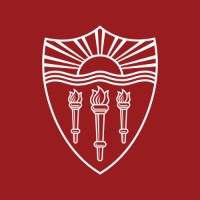
University of Southern California
The University of Southern California is a leading private research university located in Los Angeles, the capital of the Pacific Rim. This is the official LinkedIn presence for the University of Southern California. This account is managed and mediated by the staff of USC University Communications. Content (including posts from 3rd parties) that include videos, photographs, opinions and links to content outside of this channel do not necessarily represent the University of Southern California’s academic goals or opinions. Community guidelines: Alumni and students are welcome to post professional updates and news. Posts containing solicitations, product placements, derogatory or inflammatory comments are prohibited and will be removed. Off-topic comments will also be removed. Posts are not regularly monitored. Please note: for questions regarding degrees offered and admissions policies please call (213) 740-2311.






